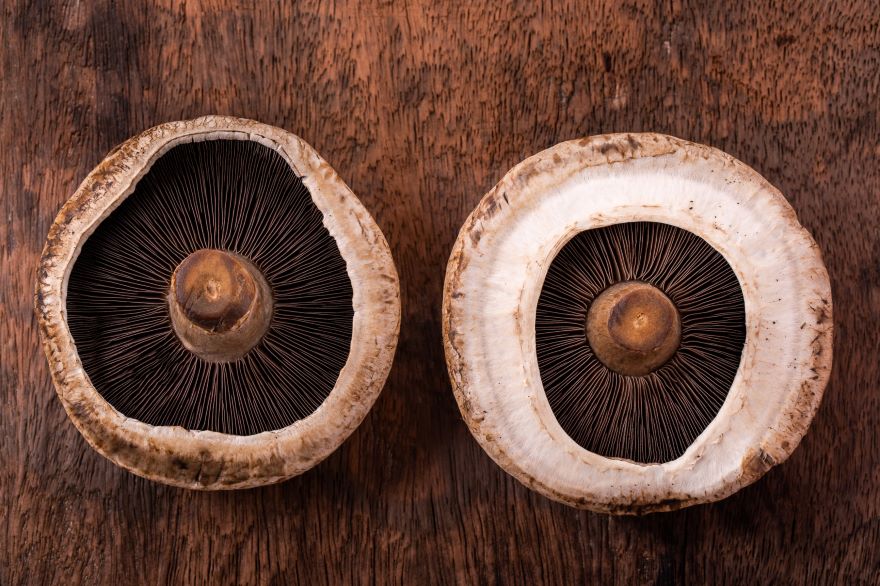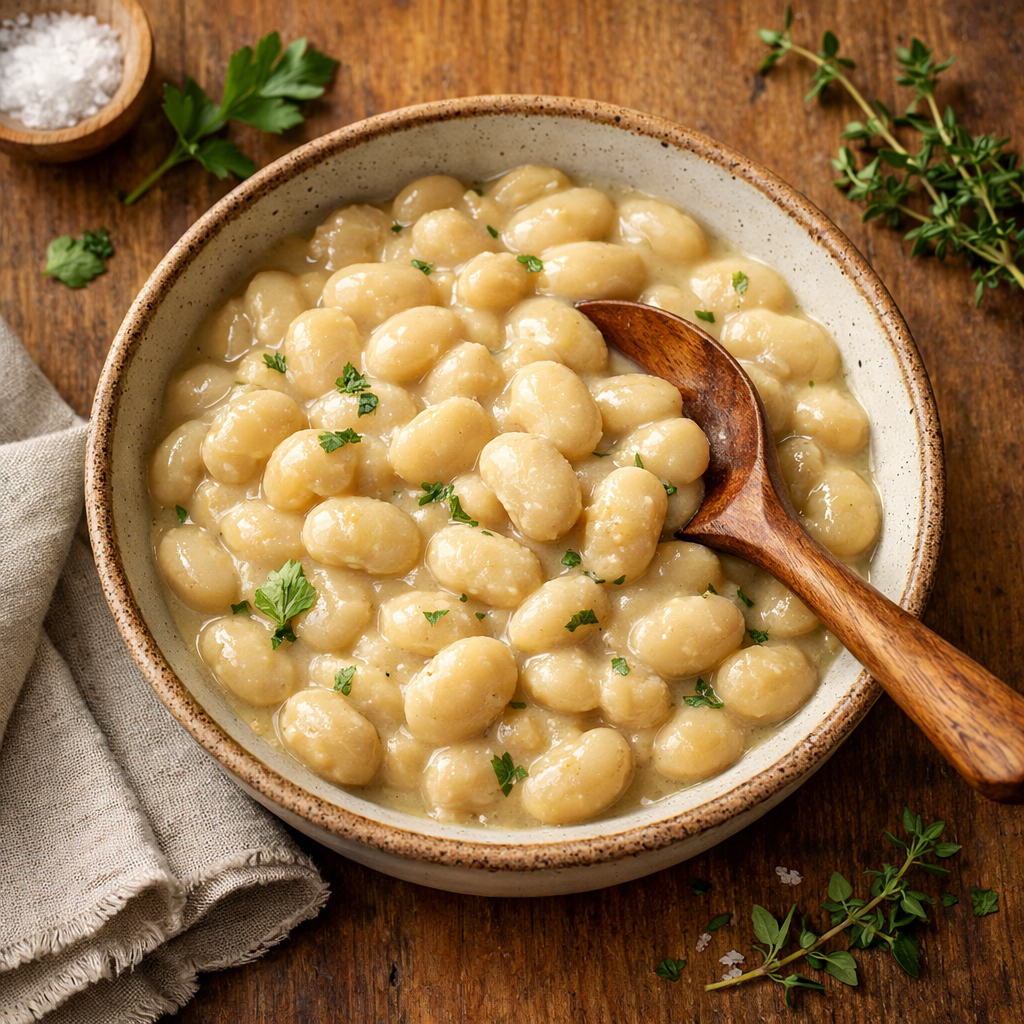Portobello mushrooms are a popular choice in many dishes due to their meaty texture and earthy flavor. When you incorporate these mushrooms into a meal, it’s important to be aware of some potential negative effects associated with consuming them. In this article, we will explore some of these concerns, including the possible presence of carcinogens, allergies, and digestive issues.

Understanding the potential risks associated with consuming portobello mushrooms is vital for making informed choices about our diets. However, it is also crucial to consider these concerns in the context of the numerous health benefits that portobello mushrooms can provide, such as their nutrients and high fiber content.
As we delve into the topic of portobello mushrooms and their effects on health, I will share my knowledge, backed by research, in a clear and confident manner. By the end of this article, I hope you will have a better understanding of these fungi and be able to make informed decisions about incorporating them into your diet.
Key Takeaways
- Portobello mushrooms offer both health benefits and potential risks
- Carcinogens, allergies, and digestive issues are some concerns with portobellos
- Making informed choices about consuming portobello mushrooms is essential for a balanced diet
Understanding Portobello Mushrooms

Portobello mushrooms are a popular type of fungi that belong to the Agaricus bisporus species. They are closely related to button mushrooms and cremini mushrooms, with the key difference being their maturation stage.In my experience, people value portobello mushrooms for their meaty texture and rich, earthy flavor.
I’ve learned that despite their gourmet status, there can be some negative effects of Portobello mushrooms. For instance, these mushrooms contain a toxin called hydrazine, also used in rocket fuel. Moreover, a study conducted by the National Library of Medicine found evidence of agaritine in fresh mushrooms, which, when fed to mice, led to increased rates of bladder cancer.
However, it’s worth noting that many types of mushrooms contain agaritine in various quantities, and the actual risk to humans from consuming portobellos remains unclear. Furthermore, another study found that dried mushrooms can potentially inhibit tumor growth in mice, suggesting that the broader health impacts of portobellos are complex and require more research.
In order to preserve the freshness and quality of portobello mushrooms, various techniques have been explored, such as gamma and electron beam irradiation. Research has shown that these methods effectively extend the shelf life of these perishable fungi, reducing the commercial drawback of their rapid spoilage.
Despite some concerns, I believe people can still enjoy portobello mushrooms as part of a balanced diet. In addition, their versatility in cooking and suitability for a wide range of dishes make them a staple ingredient in my culinary adventures. Just remember to handle and store them properly, and always consume them in moderation.
Health Benefits vs. Risks

Exploring Nutritional Values
From my research, I have found that portobello mushrooms are a nutritious food option. They are a great source of essential vitamins and minerals, such as copper and potassium. One unique fact is that mushrooms provide the only known non-animal source of vitamin D, which is essential for bone health and calcium absorption.
When it comes to including portobello mushrooms in my diet, I like to think about their nutritional value:
- Vitamin D: Vital for healthy bones
- Copper: Supports red blood cell production and immune system function
- Potassium: Helps regulate blood pressure and nerve function
Potential Health Risks
Although portobello mushrooms have many health benefits, we can note some potential negative effects. In an interview with a mushroom expert, it was mentioned that there are both beneficial and harmful compounds in the species. Certain individuals might experience negative side effects, such as digestive upsets and gastrointestinal issues, which include bloating, gas, indigestion, and abdominal discomfort.
Furthermore, there’s ongoing debate about whether or not portobello mushrooms contain toxins or carcinogenic compounds. Because the research on this topic is not conclusive, it’s essential for me to approach it with caution and make informed decisions about my personal dietary choices.
In conclusion, portobello mushrooms can be both a nutritious food option and a source of potential health risks. It’s important to weigh these aspects and make informed decisions about incorporating them into my diet.
Allergies and Digestive Issues

Allergic Reactions to Mushrooms
As someone who enjoys mushrooms, I never had any issues with them. However, I recently learned that some individuals are allergic to mushrooms, including portobello mushrooms. Allergic reactions can manifest in various ways, such as:
- Itching,
- Swelling,
- Difficulty breathing.
In rare but severe cases, consuming portobello mushrooms can lead to anaphylaxis, a life-threatening allergic reaction. If you suspect you might be allergic to mushrooms, it’s important to consult a doctor before including them in your diet.
Digestive Discomfort and Bloating
Another issue that some people (including myself) may experience is digestive discomfort and bloating. Portobello mushrooms are high in fiber, which is generally healthy for our digestive system. However, consuming portobello mushrooms in large quantities can lead to:
- Bloating
- Gas
- Stomach discomfort
These symptoms occur mainly because of the high fiber content that can be difficult for some individuals to digest, especially if they have a sensitive digestive system. I learned to moderate my portions when consuming portobello mushrooms to avoid these unpleasant side effects.
To summarize, while the mushrooms have numerous health benefits, there can be some negative effects of Portobello mushrooms, causing allergies and digestive issues in some individuals. Keep these factors in mind if you’re contemplating incorporating portobello mushrooms into your meals. Remember to always listen to your body and consult a doctor if you have concerns about your health.
Carcinogens in Mushrooms
During my research on portobello mushrooms, I discovered that some people are concerned about the presence of carcinogenic compounds in them. One such compound is agaritine, which is a naturally occurring chemical found in some mushroom species. Some researchers consider agaritine a possible carcinogen, although experts still debate the potential risk.
In addition to agaritine, mushrooms contain hydrazines – another group of compounds that can be carcinogenic. Hydrazines, believed to be present in significant amounts when consumed raw, are found in Agaricus brunnescens, a common species of mushrooms. Fortunately, certain cooking methods, such as sautéing and roasting, have been shown to significantly reduce the levels of hydrazines in mushrooms, thus minimizing any potential negative effects of Portobello mushrooms.
While researching these carcinogens, I learned that the concentration of agaritine varies depending on the mushroom species and its freshness. Fresh samples of Agaricus brunnescens have been found to contain 80-225mg/kg agaritine levels, while one dried sample had 6,520 mg/kg agaritine levels, as stated in a WSMBMP article. Researchers have not fully understood the risk associated with consuming agaritine in mushrooms, such as portobellos, and they need further research to determine the actual potential negative effects of Portobello mushrooms.
Considering these facts, it’s important for me to be cautious when preparing and consuming portobello mushrooms. By using proper cooking techniques like sautéing or roasting, I can significantly reduce the amounts of agaritine and hydrazines in mushrooms and enjoy their delicious taste without worrying too much about the potential carcinogenic effects.
Consuming Portobello Mushrooms Safely

As someone who enjoys portobello mushrooms, I want to share some important information on consuming these delicious fungi safely. In this section, I will cover proper cooking techniques, choosing quality mushrooms, and moderation in diet.
Proper Cooking Techniques
Cooking portobello mushrooms properly is essential for not only taste but also safety. When I cook portobellos, I make sure to cook them thoroughly, as this can help break down any potentially harmful compounds that might be present. Here are some cooking methods I recommend for portobello mushrooms:
- Grilling: Preheat your grill to medium-high heat, brush the mushrooms with a little oil, and cook for 3-5 minutes per side.
- Roasting: Preheat your oven to 400°F (200°C), place the mushrooms on a baking sheet, and roast for 12-15 minutes.
- Sautéing: Heat a pan with a little oil on medium heat, add the mushrooms, and cook for 5-7 minutes, tossing occasionally.
Choosing Quality Mushrooms
When selecting portobello mushrooms at the store or market, I always carefully examine them for quality. A fresh, high-quality mushroom is crucial to ensure the best taste and safety. Here are some tips that I follow to choose the best mushrooms:
- Appearance: Look for smooth, unblemished caps with a slightly firm texture. The gills underneath the cap should be free of slime or damage.
- Smell: A fresh portobello should have a subtle, earthy aroma. Avoid mushrooms with a strong, unpleasant smell.
- Storage: At home, I store my mushrooms in a paper bag in the refrigerator to help preserve their freshness and avoid moisture buildup.
Moderation in Diet
Lastly, as with any food, it’s important to include portobello mushrooms in moderation as part of a balanced diet. While they are a good source of dietary fiber and minerals such as copper and selenium, they also contain purines, which can be an issue for some individuals with specific health conditions, such as gout. Personally, I make sure to enjoy portobello mushrooms as an occasional treat rather than an everyday staple to avoid potential health issues and maintain a varied diet.
The Myth vs. Reality

Debunking Common Misconceptions
As a passionate researcher of mushrooms, I have come across various myths and misconceptions about portobello mushrooms that need clarification. One of the most common myths, which gained traction after a conversation between Paul Stamets and Joe Rogan, is that portobello mushrooms are cancerous. This statement has caused quite a stir amongst mushroom enthusiasts and culinary experts.
However, it’s essential to break down the myth. Portobello mushrooms, like any other food product, can potentially become contaminated with harmful bacteria such as E. coli or Salmonella. To minimize this risk, proper handling and thorough washing before cooking can help ensure their safety for consumption.
Scientific Evidence and Expert Opinions
While it might somewhat exaggerate the claim that portobello mushrooms are cancer-causing, it’s crucial to investigate and trust scientific evidence and expert opinions on the matter. Research conducted on mice has shown that dried mushrooms have the potential to inhibit tumor growth. Nonetheless, Agaricus brunnescens, the scientific name for portobello mushrooms, has not yet gained significant recognition as a medicinal mushroom due to a lack of concrete evidence. It’s important to remember that science is always evolving, and our understanding of these mushrooms may change over time.
As a mycologist, Paul Stamets’ expertise cannot be disregarded. Yet, it’s necessary to rely on a wider range of scientific research and expert opinions when analyzing the effects of portobello mushrooms on our health. For instance, it’s interesting to note that a case study showed a 50-year-old male experiencing a gout flare-up after consuming a diet rich in portobello mushrooms. This finding emphasizes the importance of moderation and a balanced diet.
In summary, separating myths from reality requires thorough investigation and a careful consideration of scientific research and expert opinions. Portobello mushrooms, like any other food, should be enjoyed in moderation and with proper handling to ensure a safe and delicious culinary experience.
Frequently Asked Questions
What symptoms can arise from portobello mushroom poisoning?
I have found that some people might experience allergic reactions to portobello mushrooms. Symptoms of a mushroom allergy can include itching, swelling, and difficulty breathing. Moreover, digestive issues could arise after consuming portobello mushrooms, manifesting as bloating, gas, and stomach discomfort. This is often due to their high fiber content, which can be difficult for some to digest.
Are there any health risks associated with consuming the gills of portobello mushrooms?
In my experience, there isn’t any significant risk associated with consuming the gills of portobello mushrooms. However, removing the gills is sometimes advised to reduce their strong, earthy flavor and improve the overall taste of the dish.
How might agaritine in portobello mushrooms impact human health?
Agaritine, a compound found in portobello mushrooms, is a potential carcinogen. While some studies have shown that it might disrupt cells’ genetic material causing mutations, the long-term impact on human health has not been fully reviewed. It’s essential to be cautious and consume portobello mushrooms in moderation.
What controversies exist around the consumption of portobello mushrooms?
The consumption of portobello mushrooms has been controversial, mainly due to the presence of potentially carcinogenic compounds like agaritine. Additionally, notable mycologist Paul Stamets has mentioned not being able to discuss portobello mushrooms as it would put his life in danger, which only adds to the mystery and intrigue around portobellos.
Can consuming portobello mushrooms expose one to hazardous hydrazines?
Portobello mushrooms can contain trace amounts of hydrazines, which are known to be toxic. However, cooking these mushrooms can reduce or even eliminate these hazardous compounds. Therefore, properly preparing portobello mushrooms is crucial to ensure a safe culinary experience.
What precautions should be taken when preparing portobello mushrooms to mitigate potential negative effects?
When preparing portobello mushrooms, I recommend brushing them thoroughly to remove any dirt and debris. It’s also a good idea to remove the gills, as they can retain a stronger flavor and are a primary source of agaritine. Lastly, cooking portobello mushrooms well is essential for reducing potential toxins like hydrazines and ensuring the best possible taste and texture.

*We may earn a commission for purchases made using our links. Please see our disclosure to learn more.



